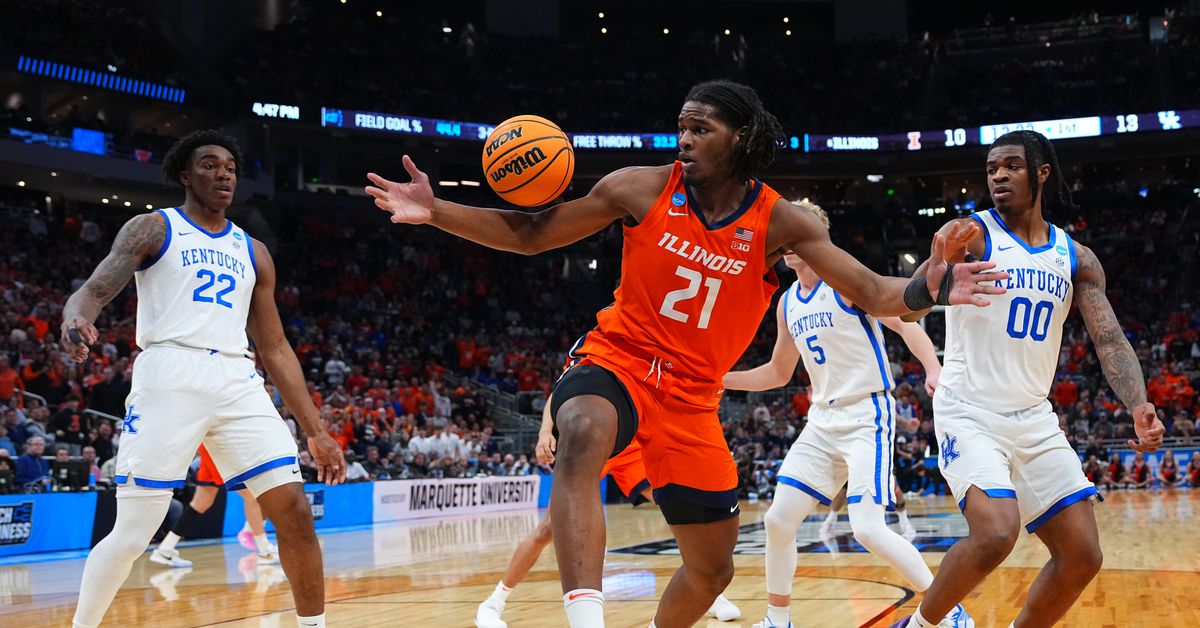At a media availability in Ann Arbor this summer, Michigan men’s basketball coach Dusty May was asked about the lack of volume three-point shooting on the 2025-26 roster.
Like skinning a cat, there’s more than one way to win a basketball game. But in an era where most teams are launching threes at a historic clip — in late February, just less than 80 percent of the 363 DI teams were attempting 20 or more threes per game, the highest mark in men’s college basketball history — three-point shooting is a priority because it can lengthen a lead and get a team back into a game quickly.
The Wolverines shot about eight threes per game last season — a mark that places Michigan in the 67th percentile — and lost some of their most frequent shooters in Danny Wolf, Tre Donaldson and Sam Walters. In a rare moment of a college coach addressing a potential weakness on their roster, May admitted to a lack of volume shooters at Michigan, but he also spoke on the importance of one other aspect of the game.
“If we shoot it poorly, with our size and athleticism, we need to be an elite offensive rebounding team,” May said. “When you look at the most efficient teams in college basketball, their first-shot offense isn’t that great. Obviously it’s good, but what makes them unique is they go get it when they miss.”
May hit the nail on the head. Of the top-30 teams in offensive rebounding percentage on KenPom, 17 of them made the NCAA Tournament, including the National Champion (Florida Gators), the national runner-up (Houston Cougars) and top-four seeds in Tennessee, Michigan State, Arizona and Texas A&M.
With offensive rebounding statistics, it’s important to remember teams that miss more shots will, in theory, have more opportunities for offensive rebounds. That said, even with two 7-footers in the starting lineup, Michigan ranked 79th out of 363 teams, a mark in the 79th percentile. In other words, the Wolverines were good at offensive rebounding, but not elite, even with all the size on last season’s roster.
Michigan has replaced Vlad Goldin and Wolf with three guys via the portal — Yaxel Lendeborg, Morez Johnson Jr. and Aday Mara. When you factor in three-point threat Will Tschetter, the Wolverines have a versatile frontcourt stacked with size and offensive upside.
May didn’t rule out Michigan playing two or even three of the players listed above at the same time.
“I think we can be even more unique. There will be times where we roll out a really big lineup like we did in the Big Ten Tournament,” May said. “Because Danny and Will were able to defend smaller guards on the perimeter and stay in front of guards, it allowed us to play like that. Offensively, when you have talented enough players, you can find a way to be efficient enough to win.”
The new additions can certainly help Michigan improve on the offensive glass. UAB (ninth in offensive rebounding percentage) and Illinois (19th) were top-20 programs in offensive rebounding, and Lendeborg and Johnson combined to grab 6.4 offensive rebounds per game last season. While Mara struggled to see the floor early last season, he averaged nearly two offensive rebounds in less than 15 minutes per game.
So even if all three don’t improve on the offensive glass at all — which feels unlikely — Michigan still added about eight more offensive rebounds per game in the frontcourt this offseason. Eight extra possessions can be the difference in whether you win or lose close games.
All these guys can bring energy to the Wolverines on the boards, and they’ve already been going hard on the glass at practice.
“(May has) definitely been putting a big emphasis on (offensive rebounding),” Johnson said. “I’m used to that at my previous school — if I had eight rebounds, probably 4-5 of them were offensive rebounds, so I’m used to crashing the glass at my previous school. We’re preparing for that, that’s what I’m doing every night, every time I step on the floor I’m going to clear the glass. I know that’s what I’m doing, so I got to control my effort and energy.”
So yes, while Michigan may not have as much three-point shooting as last season, that lack of three-point shooting won’t really matter if it becomes an elite offensive rebounding team.
“We think that these guys all complement each other, when you look at their skillsets,” May said of his new frontcourt. “We do think we have a lot of options, and as the teams in the Final Four last year proved, you need great depth if you want to play into March and hopefully into April.”

